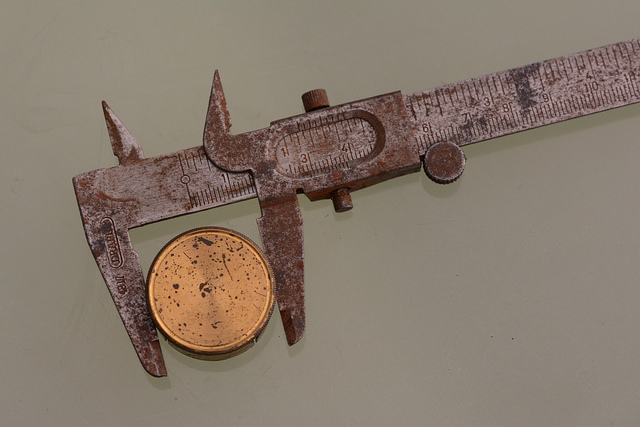Some Scientific Instruments
Altimeter—An instrument used for measuring altitudes in aircraft.
Ammeter—An instrument for measuring electrical currents in amperes.
Anemometer—An instrument for measuring the force and velocity of wind.
Audiometer—An instrument for measuring the intensity of sound.
Audiophone—An instrument for improving imperfect sense of hearing.
Barometer—An apparatus used for measuring the atmospheric pres-sure. It is of 2 types—Aneroid and Fortin’s Barometer.
Calorimeter—An instrument used for measuring quantities of heat.
Carburettor—An apparatus used in an internal combustion engine for charging air with petrol vapour.
Cardiograph—A medical instrument for tracing heart movements.
Chronometer—An instrument kept on board ships for measuring accurate time.
Cinematography—It contains a series of lenses arranged to throw on screen an enlarged image of photographs.
Crescograph—It was invented by J.C. Bose. It is used for measuring growth in plants.
Dip Circle—An instrument for determining the angle between the direction of the resultant intensity of earth’s field and the horizontal component at a plane. This particular angle is known as the dip of that place.
Drinker’s Apparatus—An instrument used to help breathing in infantile paralysis.
Dynamo—The origin of electricity in a dynamo is the transformation of mechanical energy into electrical energy.
Electrometer—It is an instrument for measuring electricity.
Eudiometer—A glass tube for measuring volume changes in chemical reactions between gases.
Evaporimeter—Cumulative Pan Evaporimeter used to measure water evaporation through sunlights.
Galvanometer—An instrument for measuring electric currents of small magnitude.
Hygroscope—An instrument used to illustrate dynamics of rotating bodies; a type of spinning wheel fixed to the axle.
Hydrometer—An instrument used for measuring the specific gravity of liquids.
Hydrophone—An instrument for recording sound under water.
Hygrometer—An instrument for measuring humidity in air.
Lactometer—It is used for testing the purity of milk.
Manometer—An instrument for determining the pressure of a gas.
Mariner’s compass—An apparatus used by sailors to tell them the direction. The needle always points north south.
Microphone—An instrument for converting sound waves into electrical vibrations and thus to magnify the sound.
Microscope—An instrument used for mangifying minute objects by a lens system.
Odometer—An instrument by which the distance covered by wheeled vehicles is measured.
Phonograph—An instrument for reproducing sound.
Photometer—It is an instrument for measuring the intensity of light; a device for comparing the luminous intensity of sources of light.
Polarimeter—An instrument used for measuring optical activity.
Potentiometer—It is used for comapring electromotive force (e.m.f.) of cells measurement of the thermal e.m.f. large potential differences and currents.
Pyrometer—An instrument for recording high temperatures from a great distance.
Radar—It is an abbreviated form of Radio, Angle, Direction and Range. It is used for detecting the direction and range of an approaching plane by means of radio microwaves.
Rain Gauge—An apparatus for recording rainfall at a particular place.
Radiometer—An instrument for measuring the emission of radiant energy.
Refractometer—An instrument to measure refractive indexes.
Saccharimeter—An instrument for determining the amount of sugar in a solution. It is used in breweries.
Seismometer or Seismograph—An instrument for recording earth-quake shocks.
Sextant—An instrument invented by John Hadley used for measuring the altitude of the sun and other heavenly bodies.
Spectrometer—An instrument for measuring the energy distribution of a particular type of radiation.
Speedometer—An instrument which indicates the speed at which a vehicle is moving.
Spherometer—An instrument for measuring curvature of surfaces.
Stethoscope—An instrument used by physicians to hear and analyse movements of heart and lungs.
Stroboscope—An instrument for viewing objects moving rapidly with a periodic motion and to see them as if they were at rest.
Sunshine Recorder—It is used to record sunshine duration (hrs/day) for growth of crops/plants.
Tachometer—An instrument for determining speeds of aeroplanes and motor-boats.
Teleprinter—An instrument which prints automatically messages sent from one place to another on telegraph lines.
Telstar—It is a space communication satellite developed by Bell for overseas communications. It was launched on July 10, 1962 from Cape Canaveral (U.S.A.). Besides telephone calls, Telstar enables television microwave transmission to be made from and to any country with a transmitting and receiving station.
Telescope—It is an apparatus used for observing distant objects.
Theodollite–An instrument for measuring horizontal and vertical angles.
Thermocouple—An instrument based on thermoelectricity used for measuring temperatures.
Thermometer—An apparatus used for measuring temperature (maxi. and mini.)
Thermometer (Dry and Wet Bulb)—It is used to measure atmospheric humidity.
Thermostat—An instrument used to regulate temperature to a particular degree.
Viscometer—An instrument to measure viscosity.
Wind Vane—An instrument for measuring wind direction, indicated with N,S E,W directions






















